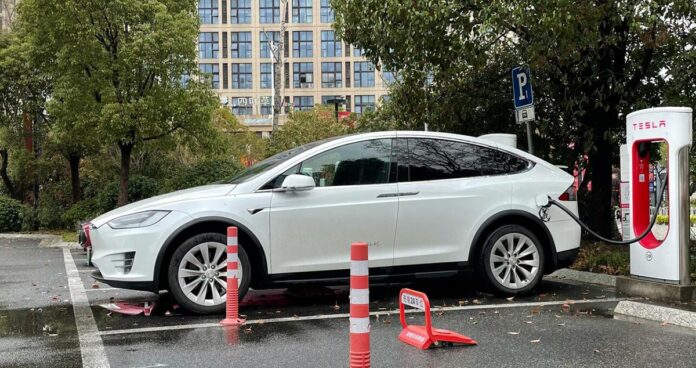Tesla:
In the rapidly evolving world of electric vehicles, Tesla, Inc. has been at the forefront of innovation and market dominance. However, even giants stumble occasionally, and Tesla’s recent recall of thousands of Model X electric vehicles in China due to brake fluid sensor issues is a reminder that no company is immune to quality control challenges. In this blog, we’ll explore the details of this recall, its implications, and how Tesla plans to address the issue.
Model X Recall in China:
Tesla is no stranger to recalls, and this time, it’s concerning the Model X. The recall affects a total of 4,787 imported Model X vehicles with production dates between October 13, 2021, and September 28, 2023. The problem stems from the brake fluid level sensor’s calibration range, which may result in the failure to alert drivers when the brake fluid level is low. In severe cases, this could compromise the vehicle’s braking system, significantly increasing the risk of accidents and posing a significant safety hazard.
Tesla’s Response:
To rectify this issue, Tesla has come up with a solution. The company will provide a free software update to all affected vehicles via OTA (over-the-air) technology. This software update, designated as version 2023.32.9 or later, will correct the calibration range of the signals received by the vehicle controller. By doing so, it ensures that an alert will accurately trigger when the brake fluid level is low, enhancing the safety of the Model X fleet.
For vehicles that cannot receive the update via OTA technology, Tesla will proactively contact users to schedule a convenient time for upgrading the software, all at no additional cost to the owners.

Pros of OTA software updates for car recalls:
- Convenience: OTA updates can be delivered to customers’ vehicles wherever they are, without the need to visit a dealership. This is especially convenient for customers who live in rural areas or who have busy schedules.
- Speed: OTA updates can be deployed quickly to a large number of vehicles simultaneously. This is important for recalls, where it is important to get the fix to affected vehicles as quickly as possible.
- Cost savings: OTA updates are less expensive for automakers to implement than traditional recalls, which often involve physically bringing vehicles back to dealerships.
- Improved safety: OTA updates can be used to fix safety-related problems quickly and efficiently. This can help to reduce the number of accidents caused by vehicle defects.
Cons of OTA software updates for car recalls:
- Reliability: OTA updates rely on a reliable internet connection. If a customer does not have a good internet connection, or if the automaker’s servers are overloaded, the update may not be successful.
- Security: OTA updates could be exploited by hackers to install malicious software on vehicles. Automakers need to take steps to mitigate this risk, such as by using encryption and other security measures.
- Customer awareness: Automakers need to make sure that customers are aware of recalls and that they know how to install OTA updates. This is especially important for customers who are not tech-savvy.
Conclusion:
Innovation and technology are central to Tesla’s identity, but as this recall demonstrates, maintaining quality and safety is an ongoing challenge for any automaker. Tesla’s quick response to address the brake fluid sensor issue is commendable, as it prioritizes customer safety and satisfaction. This episode reminds us that even the most advanced and cutting-edge companies must remain vigilant and responsive when it comes to product quality.
In the end, what matters most is how swiftly and effectively Tesla addresses these challenges and how well it continues to innovate in the electric vehicle space. As technology continues to evolve, we can expect Tesla to be at the forefront of shaping the future of sustainable transportation while learning from its past experiences to ensure the utmost safety and reliability of its vehicles.


































